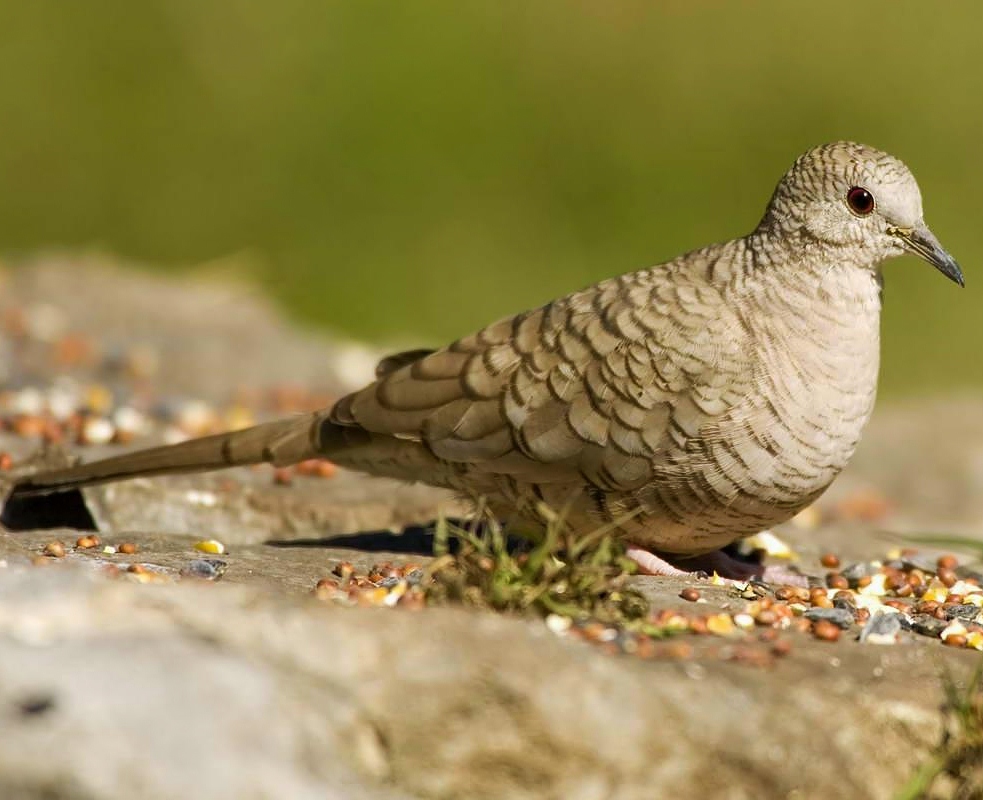 |
| (Photo from Free Pet Wallpapers) |
Common name:
Inca dove (en); rolinha-inca (pt); colombe inca (fr); tortolita mexicana (es); Incatäubchen (de)
Taxonomy:
Order Columbiformes
Family Columbidae
Range:
This species is found from the southern United States, in south-eastern California, Arizona, New Mexico and Texas, across Mexico and south to Costa Rica.
Size:
These birds are 18-23 cm long and weigh 30-60 g.
Habitat:
The Inca dove is mostly found in urban and rural areas and other human-modified habitats, but also in arid and semi-arid scrublands and woodlands and in moist tropical scrublands, from sea level up to an altitude of 3.000 m.
Diet:
They forage on the ground, mainly eating seeds of grasses and weeds, agricultural grains and nuts, but also some fruits, especially from cacti.
Breeding:
Inca doves can breed all year round, nesting in a frail structure made of small twigs by the female. the hest is usually placed low in a tree or scrub. The female lays 2 white eggs, which are incubated by both parents fro 13-15 days. The chicks are fed crop milk by both parents and fledge 12-16 days after hatching.
Conservation:
IUCN status – LC (Least Concern)
This species has a very large breeding range and this range is in fact expanding due to coexistance with humans. The population is estimated to be increasing at a rapid rate of over 30% per decade, but this information is based on surveys performed in less than half of the species global range.







